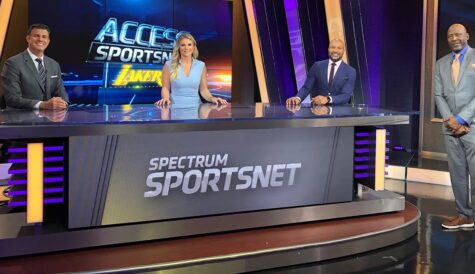
After more than 40 years of operation, DTVE is closing its doors and our website will no longer be updated daily. Thank you for all of your support.
Adaptive evolution – ABR and targeted advertising
 Yuval Fisher, chief technology officer of RGB Networks takes a look at the advantages of adaptive HTTP streaming and the promise of highly targeted ad insertion.
Yuval Fisher, chief technology officer of RGB Networks takes a look at the advantages of adaptive HTTP streaming and the promise of highly targeted ad insertion.
The multiscreen content mix has exploded to include thousands of on-demand titles plus a full complement of live channels delivered in IP mode. However, reaching users with all this content has become much harder thanks to the multitude of screen resolutions and streaming formats that must be accommodated. A critical technology driver in this market transformation has been the success of adaptive bitrate (ABR) streaming as a means of distributing content over the Internet.
Indeed, the beauty of ABR lies in that it leverages HTTP (Hypertext Transfer Protocol) distribution technology used in CDN (content delivery network) caching servers worldwide. The fact that offers a globally scalable approach to video services that is responsive to the formatting and screen resolution requirements of myriad device platforms means it has won hands-down over competing distribution modes. Its advantages over traditional streaming range from including lower infrastructure costs for content providers by eliminating specialty streaming servers in lieu of generic HTTP caches/proxies, to the fact that content delivery is dynamically adapted to the weakest link in the end-to-end delivery chain. Subscribers no longer need to statically select a bitrate on their own, and so can enjoy fast start-up and seek times. Equally, annoying user experience shortcomings, which include long initial buffer times, disconnects and playback start/stop, are virtually eliminated with ABR.
Arguably, its greatest benefit is that ABR offers the means of facilitating targeted advertising. As operators around the world accelerate the rollout of TV Everywhere multiscreen services, the required investment in new infrastructure has triggered a need for new revenue sources to off-set costs. The need to facilitate new means of monetisation is even more imperative in light of the fact that early business models for delivering video to desktop and mobile devices are currently foregoing subscription fees to help drive consumer adoption. ABR streaming can facilitate hyper-targeted advertising down to the neighbourhood, device or even specific individual subscriber demographics as the ads are dynamically inserted into the live and on-demand streams as they go out to end users, rather than being spliced into the content before it is transcoded. Beyond the ability to capture new revenues from local spot sales, these capabilities open a broader revenue opportunity in the context of what is transpiring across the TV advertising industry at large.
Technically, the challenges for multiscreen environments from an architecture point of view start with the fact that every ABR stream must be formatted to render on whatever device is used to acquire that stream. ABR employs a “pull” method in distribution that is altogether different from the “push” mode of traditional digital TV. Every few seconds an ABR-enabled device, by referencing the bitrate options or “adaptation sets” listed for a given piece of content in a manifest file sent from an HTTP server, asks the server to send a segment or fragment (also called a chunk) of streamed content at the most optimum bitrate, depending on how much bandwidth is available at that moment in time and how much processing power the device has available for decoding the bit streams. As each chunk is delivered, the device monitors the bandwidth and CPU usage conditions, making future chunk requests that properly conform to these potentially varying conditions.
Lack of standards
Complicating the situation is that there is no uniformly accepted ABR standard as of yet. Major internet technology suppliers – most notably Apple, Microsoft and Adobe – have developed the technology in different ways to serve their own market agendas, resulting in a diverse range of incompatible ABR modes that must be accommodated and formatted by anyone seeking to stream video content to all consumer devices. While each protocol (Apple’s HTTP Live Streaming HLS, Microsoft Smooth Streaming and Adobe’s HTTP Dynamic Streaming HDS) use MPEG-4/H.264 video encoding along with MPEG Advanced Audio Coding (AAC), each uses a different approach to constructing fragments, timing their sequence and communicating manifest files to clients. The inherent incompatibilities among these three protocols have fragmented the market and left video service providers in a difficult situation because their infrastructure is unable cope. While efforts to overcome these incompatibilities are contemplated in the MPEG DASH standard, the fact is that DASH represents still another ABR format that must be accommodated in the multiscreen streaming architecture.
There are also incompatibilities that must be addressed with respect to content protection. The MSS client software is designed to work in conjunction with the proprietary PlayReady DRM (digital rights management) system. Here Adobe has Adobe Access and HLS has a more open format but leaves unspecified the management of the delivery of encryption keys. This means that each media asset prepared by a transcoder must be formatted and encrypted for the type of device on the receiving end, and the key server must deliver keys matched to the DRM system that works with that device.
Multiscreen service providers looking to overcome this raft of bewildering challenges need to look to a second generation Multiscreen 2.0 technology platform that will ultimately free them from constraints that have made delivering their services a burdensome undertaking with limited upside. The critical distinctions of Multiscreen 2.0 architecture is that it decouples the encoding/transcoding functions from the ABR packaging and content protection processes, thereby allowing optimisation of technologies in all domains. In doing so it overcomes the limitations discussed above and enables greater levels of personalisation and augments revenue streams like never before.


